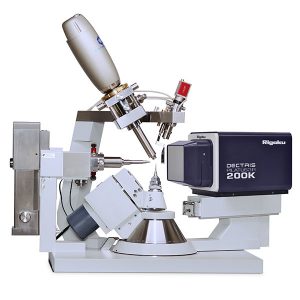University of Auckland Crystallographers to Benefit from State-of-Art Technology
AXT is proud to announce the sale of a XtaLAB Synergy-S single crystal X-ray diffractometer to the University of Auckland. The Synergy series of diffractometers is the latest generation instrument and the first offering following the merger of industry powerhouses Rigaku and Agilent, who formed Rigaku Oxford Diffraction. This sale is also significant as it is the first Synergy system to be installed in the Oceania region.
Single crystal small molecule diffractometers are fundamental tools for chemistry researchers. They are crucial for them to be able to understand the structure of their molecules providing them with valuable information about how they behave. The University of Auckland has recently decommissioned an old system that had simply come to the end of its life and will be replacing it with this state-of-the-art system.
The Synergy-S is a fast and agile system that will provide performance far beyond the capabilities of the old system. It incorporates the latest technology, including a PhotonJet-S microfocus X-ray source, redesigned Kappa goniometer, photon counting detector and highly parallelised optics. All this hardware is exploited by the researchers using a user-inspired software interface optimised for throughput and accuracy as well as structural resolution.
Associate Professor Tilo Söhnel was key to securing funding to acquire the Synergy-S. “The Synergy-S offered us the levels of performance that we required. We were after a system that could measure samples quickly and the Synergy-S has reduced measurement times literally from days to minutes and hours. It is also able to resolve structures of small, weakly diffracting crystals that we simply could not measure before, as well as heavily diffracting and absorbing materials. It also offers new levels of versatility and will allow us to venture into biological chemistry looking at proteins”, said Dr. Söhnel.
The versatility of the system is enhanced through the use of two X-ray sources, copper and silver. “Copper will be our high intensity workhorse, while we will defer to silver for the analysis of highly absorbing and highly diffracting samples”, commented Dr. Söhnel.
In the process of evaluating the Synergy-S for their requirements, some samples were measured by the applications team at Rigaku Oxford Diffraction. The data generated on fused-ring metallabenzene structures was of such good quality that it was published in one of the top chemistry journals in the world, Angewandte Chemie (Angew. Chem. Int. Ed. 2017, 56, 143-147). Dr. Söhnel added, “this is no doubt the first of many publications that will be produced using data generated by the Synergy-S”.
This new Synergy-S will be a heavily used instrument serving a large research community including academics, over 100 postgraduate student as well as external researchers from countries as far afield as Malaysia and Iran who do not have this type of facility. These researchers are involved in topics as diverse as metal-organic materials, macromolecules, catalysts, organic and inorganic chemistry, bio-inorganic chemistry, medicinal chemistry and drug discovery.
Rigaku Oxford Diffraction instruments are exclusively distributed in Australia and New Zealand by AXT. They constitute part of AXT’s extensive analytical instrument portfolio.
Posted April 19, 2017
The Rigaku Oxford Diffraction Synergy-S single crystal diffractometer with Pilatus 200K hybrid photon counting detector.


